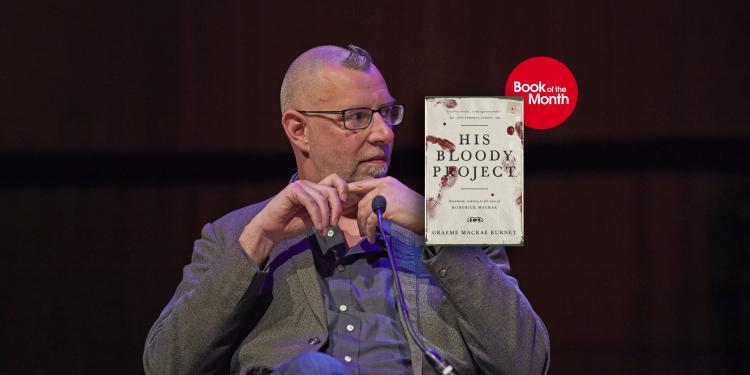Despite being a work of fiction, His Bloody Project is constructed as a supposedly factual account of three murders committed in the 1800s. In the novel’s preface, the author, Graeme Macrae Burnet, reveals that he found the documents that follow while researching his family history at the Highland Archive Centre in Inverness. He gives the lead protagonist his surname and even the novel’s subtitle – ‘Documents relating to the case of Roderick Macrae’ – crafts a picture of a true crime. Discuss this deliberate and considered presentation of the novel, and how the literary techniques and format employed by the author shaped your interpretation of the events.
Much of the novel is a first-person account, written by Roderick Macrae, a 17-year-old boy who murdered three people in the small Scottish township of Culduie. When reading this section of the novel (‘The Account of Roderick Macrae’), did you take Roddy’s memoir at face value, and did your thoughts toward him or the events in question change after reading the preceding sections of the novel?
One of the inspirations for His Bloody Project is a real 19th century memoir, I, Pierre Rivière, Having Slaughtered My Mother, My Sister, and My Brother… written by French peasant Pierre Rivière while in prison for killing his family (the memoir was edited by Michel Foucault and published in 1976). Burnet says he was particularly struck by the eloquence of Rivière’s writing and the way it contrasted sharply with the brutality of his actions. Do you see a similar juxtaposition between Roddy’s words and deeds?
His Bloody Project details the power structures between crofters and Lairds in mid-19th century Scotland, a time just after the first wave of Highland Clearances. To what extent did you read the novel as a work of historical fiction, rather than, say, a crime thriller?
During the period the novel is set in, estate owners held huge amounts of power while the crofting families who lived on their land had very few rights. “It is not that the laird might have use for the sea-ware, my point is merely that the sea-ware is the property of the laird?” He paused for a moment. “I’m sure I do not need to instruct a devout man like yourself that it is not for one man to be taking what belongs to another.” (Page 74). In a key section of the novel, Roddy and his father collect seaweed to use as fertiliser, but are forced to return it after the constable declares it properly of the estate. Discuss this extension of land ownership that is detailed in the novel, and how it contributed to the poverty cycle endured by the crofters and Roddy’s family.
‘I have always shrunk from killing so much as a hen, and do not understand why educated men regard the killing of living creatures as sport.’ (Page 33). This bloody killing of a wounded sheep by Roddy sets off a chain of events that culminate in murder. Roddy can be viewed as both a simple and complex man, a man who is sympathetic towards animals, yet also capable of highly-brutal acts. Did these acts convince you that there is more to Roddy than meets the eye? And if so, what?
Lachlan’s death is foretold by Roddy’s sister, Jetta (Page 142). Like their mother, Jetta is said to have second sight - she is ‘prone to visions’ and ‘concerned with omens and charms’. There is a strong sense of superstition in the book, despite those in the novel living under the Presbyterian church. Why do you think religion and folklore existed hand in hand in Scottish communities of the time?
The dynamic between Roddy and his father is complex and multifaceted. How does their relationship evolve throughout the novel, and what role does the father’s history of violence and authoritarian behaviour play in shaping Roddy’s actions and decisions? Consider their interactions, beliefs, and the family’s history on their relationship.
The book explores the concept of culpability and the blurred lines between sanity and insanity. ‘In the yellow months, the nights here are never properly dark. The world appears instead as if all colour has been drained from it, and when the moon is high, everything is silver, as if rendered in the etching of a book. If I found myself close to the windows of my neighbors, I would gaze enviously at the slumbering bodies.’ (Page 91). Roddy writes poetically and articulately. Despite this, his actions are often unusual and there is ambiguity in his statements, his intent never fully explained. How do you interpret the character of Roderick Macrae?
Within the trial scenes, there is a great deal of conjecture accompanied by conflicting witness statements. Did this exploration of subjectivity affect your trust in the characters’ versions of events? Discuss how the author has employed unreliable narration throughout the novel and the impact of this narrative technique.
Justice and morality are key themes in the novel and Lachlan’s fate could be attributed to the abuse he bestowed on the Macrae family in his tyrannical reign as constable. How did the author challenge your perception of right and wrong through both Roddy and Lachlan’s actions?




















